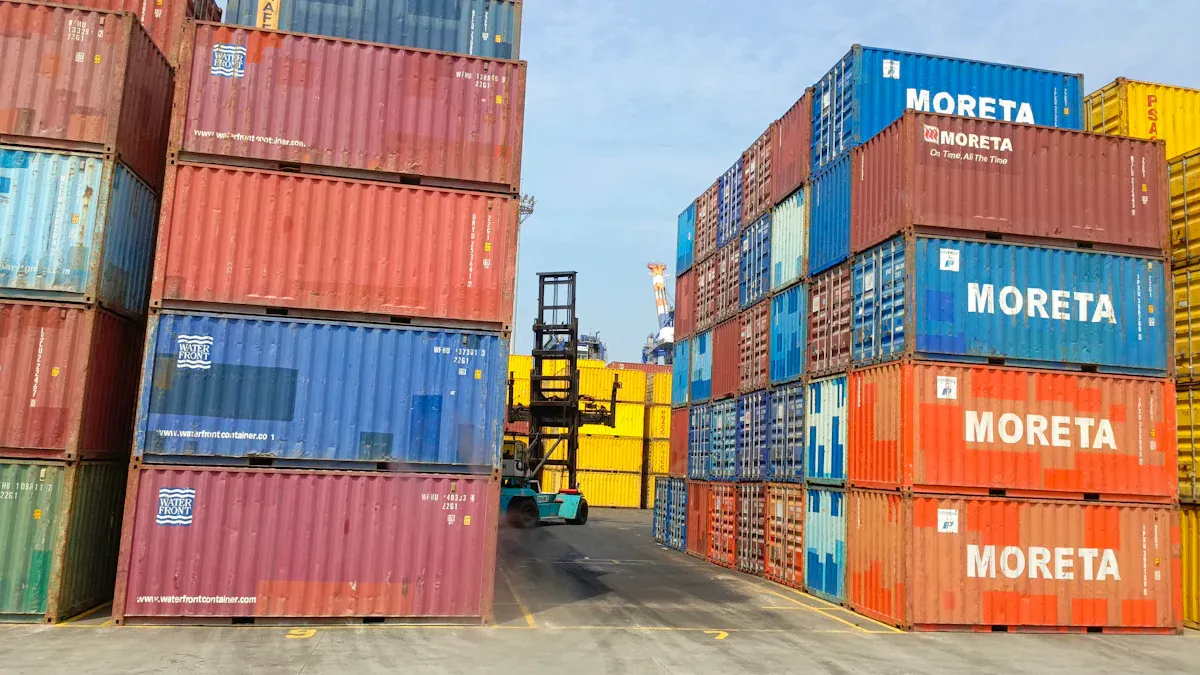
The 2025 budget made significant changes to taxes for PCB products in India, including the introduction of a specific pcba hsn code. New GST rates are easier to follow and report, which helps companies comply with regulations in the electronics field. Customs duty on important parts, like PCB assemblies, is removed until 2029, supporting the local manufacturing of these components. India is working diligently to grow its semiconductor industry, with ₹4,203 crore allocated for building factories. These updates in the 2025 budget enhance GST rules and improve e-invoicing and tax processes for manufacturers and sellers.
Key Takeaways
The 2025 budget makes GST rules simpler for PCBA products.
Taxes on important PCBA parts are cut or removed. This lowers import costs and helps local factories.
A new ‘pcba hsn code’ helps sort products better. This reduces mistakes and makes following rules easier.
Cheaper costs and easy tax rules bring in foreign money. This helps India’s electronics industry grow.
Small businesses should learn GST rules and update their systems to adjust to the changes.
Key Changes in GST and Customs Duties for PCBA Products

Updates in GST Rates and “pcba hsn code”
The 2025 budget brought big changes to GST for PCBA products. The government made taxes simpler to follow and understand. A special pcba hsn code now helps classify these products easily. This change clears up confusion and makes tax reporting more accurate.
The new GST rates are designed to help electronics makers. By matching rates to industry needs, the government supports local production. These changes also make taxes clearer, so you can handle them better.
Adjustments in Customs Duties for PCBA Products
Customs duty changes in 2025 aim to boost local manufacturing. The government lowered or removed duties on key PCBA parts. For instance, touch glass sheets and touch sensor PCBs now have a 5% duty. Parts for LCD/LED TV open cells and PCBA inputs now have no duty.
Here’s a quick look at the new customs duty rates:
Component/Category | Old BCD Rate | New BCD Rate |
|---|---|---|
Touch glass sheet | N/A | 5% |
Touch sensor PCB | N/A | 5% |
Inputs/parts for open cell of LCD/LED TV | 2.5% | Nil |
Inputs/parts for PCBA, Camera Module, etc. | 2.5% | Nil |
These changes lower the cost of importing important parts. You can now buy these parts cheaper, cutting production costs. This supports India’s goal to lead in electronics manufacturing.
Simplified Tariff Structure and Its Implications
The government also made the tariff structure for PCBA products simpler. This change makes it easier to calculate taxes and duties. You don’t need to deal with many tax slabs or unclear rules.
This helps manufacturers save time and reduce paperwork. It lets you focus more on making and improving products. The simpler system also attracts foreign investors. A clear tax system makes India stronger in the global electronics market.
The easier tariff structure and lower customs duties help the electronics industry. You’ll see more investments, lower costs, and more local production.
Impact of GST and Customs Duty Changes on the Industry
Cost Implications for Manufacturers
The new GST and customs rules change costs for manufacturers. Taxes are now simpler, combining many into one GST. This makes it easier to follow rules and reduces confusion. Tax credits for buying between states also lower costs, helping you compete better.
But there are some problems too. Small manufacturers now pay more taxes due to fewer exemptions. Taxes on moving stock mean you need more money upfront. Also, petroleum products don’t get GST credits, which raises costs for some.
Here’s a simple look at the good and bad effects:
Positive Impacts on Manufacturers | Negative Impacts on Manufacturers |
|---|---|
One Tax: Easier to understand | No SSI Exemption: Small businesses pay more taxes |
Lower Costs: Tax credits help save money | More Money Needed: Stock transfers taxed |
Fewer Tax Confusions | No Credit for Petroleum Products |
Easier to Follow Rules | More Paperwork: Extra returns required |
These changes mean you need to plan your money carefully. While you can save in some areas, you’ll also have more rules to follow.
Influence on Localization and “gst on imports”
Lower customs duties and GST changes support local production. Cheaper import costs for parts make it easier to produce locally. For example, no customs duty on PCBA parts helps Indian factories.
You can now buy materials from local suppliers. This supports India’s “Make in India” plan and reduces reliance on imports. But GST on imports still ensures fair competition between local and foreign goods.
By focusing on local production, you help India grow in electronics. Lower customs duties also save money while switching to local suppliers.
Effects on “gst on exports” and Global Competitiveness
GST has made exporting easier and cheaper. It removes extra taxes, lowering costs and improving prices. Tax credits also help you sell products at better prices globally.
Refunds on GST for exports give you more money to invest in technology. Special zones now have better facilities to help exporters. Government programs like MEIS and SEIS give extra support to compete worldwide.
GST cuts extra taxes, lowering production costs.
Tax credits make exports cheaper.
GST refunds give exporters more cash.
Better technology helps with tax rules.
Special zones improve export facilities.
Government programs offer extra help.
These updates help you compete globally. By using GST benefits, you can focus on making better products and staying ahead internationally.
Industry Reactions and Global Comparisons
Feedback from Industry Stakeholders
Industry experts have mixed feelings about the new tax rules. Many manufacturers like the lower customs duty on PCBA parts. This reduces costs and supports local production. It also matches India’s “Make in India” plan to grow electronics manufacturing.
However, small businesses face problems with the new tax system. They find it hard to follow the rules due to fewer resources. Simplified customs steps are another positive change. These steps speed up processes and improve supply chains.
Still, many businesses need better training on GST rules. Managing input tax credits and legal details is confusing for them. Helping small companies understand these rules can make them more successful.
Comparison with Global GST and Customs Policies
India’s new tax policies follow global trends in trade. For example, India added anti-dumping duties on PCBs from China and Hong Kong. This protects local industries, just like other countries do.
Date | Action | Description |
|---|---|---|
March 16, 2024 | Anti-Dumping Duty Added | India taxed PCBs from China and Hong Kong to protect local businesses. |
Globally, the GSTP helps developing countries with lower tariffs. This system makes trade easier and helps India compete worldwide. By following these practices, India grows stronger in global electronics markets.
Competitive Advantages and Challenges
The new customs rules give India a big advantage. Lower taxes on PCBA parts cut costs, making products cheaper. The GST system also makes taxes easier to handle. This attracts foreign companies to invest in India.
But there are still challenges for manufacturers. They struggle with quality checks, cost control, and using new technology. Old inspection methods slow down production, and managing schedules is tricky. Small businesses also find it hard to upgrade IT systems for GST.
Challenge Type | Description |
|---|---|
Changing Tax Rates | Businesses must adjust prices as tax rates change. |
IT System Upgrades | Small firms struggle to improve digital tools for GST. |
Lack of Training | Many don’t understand GST rules, making compliance harder. |
To solve these problems, companies should use better technology and train workers. Fixing these issues will help them benefit from the new tax policies.
Additional Related Changes Affecting PCBA Products
Updates in Duties for Raw Materials and Components
In 2025, import duties on PCBA materials changed a lot. These changes lower costs and support local production. For example, duties on touch sensor PCBs and TV parts are reduced or removed. This helps you buy materials cheaper and stay competitive.
To follow these updates, you need the right paperwork for customs. Here’s a list of important documents you’ll need:
Three copies of the shipping bill
Airway bill or bill of lading copy
Proof of duty payment for imports
RBI approval for re-exporting, if needed
Bank-certified invoice copies
Bill of entry copy
Import invoice
Freight and insurance certificate
Six copies of the AR-4 form
Export invoice and packing list
These papers make customs easier and help you save on duties. Staying organized lets you fully use these benefits.
Broader Implications for the Electronics Sector
Lower import duties have big effects on electronics. Cheaper materials encourage more factories in India. This supports the “Make in India” plan for self-reliance.
Local suppliers will compete more, improving quality and innovation. Simpler taxes mean less paperwork, so you can grow faster. But small businesses may struggle with new rules and tech upgrades.
Government Initiatives Supporting “changes” in the Industry
The government has started programs to help the PCBA industry. These programs focus on local production, skilled workers, and innovation.
Initiative | Description |
|---|---|
On-shoring | Making PCBs in India to rely less on imports. |
Workforce Development | Training workers for skills in the PCB industry. |
Sustained R&D | Supporting research to improve PCB technology. |
These programs create a helpful environment for your business. Using them can boost your production and keep you competitive globally.
The 2025 changes in GST rates and customs duties make taxes simpler. Costs for PCBA products are now lower, helping local factories grow. These updates support India’s “Make in India” plan for self-reliance. Over time, businesses will see better efficiency and stronger competition.
Key Forecasts:
India’s economy may grow 8.5% in FY 2026-27, even with inflation.
Tax changes could save $200 billion in logistics each year.
Still, higher tariffs might disrupt supply chains. Half of companies plan changes to handle this. Adjusting to these reforms can help your business grow steadily.
FAQ
1. What is the GST rate for PCBA products in 2025?
The GST rate for PCBA products is now simpler. The rate depends on the product type under the pcba hsn code. Check the GST portal for the latest rates.
2. How do customs duty changes impact PCBA imports?
Customs duties on key PCBA parts are reduced or removed. Parts like touch sensor PCBs and TV components are cheaper to import. This lowers costs and supports local manufacturing.
3. Why is the new “pcba hsn code” important?
The pcba hsn code helps classify PCBA products better. It makes tax reporting easier and reduces confusion. This change helps manufacturers follow GST rules smoothly.
4. Do exporters gain from the new GST rules?
Yes, exporters get GST refunds and tax credits. These lower costs and improve global competitiveness. SEZs also provide better facilities and support for exporters.
5. How can small businesses handle the new tax rules?
Small businesses should learn GST rules and manage tax credits. Upgrading IT systems and getting expert advice can help. These steps make it easier to follow the new tax system.
Tip: Keep checking government updates to use all tax benefits.
See Also
Comparing Turnkey And Consignment PCBA Manufacturing Approaches
Navigating ITAR Regulations In PCBA Production For 2025
Impact Of Duty Changes On Mobile PCBA Pricing
Innovative Technologies Shaping PCBA Production For Consumers





